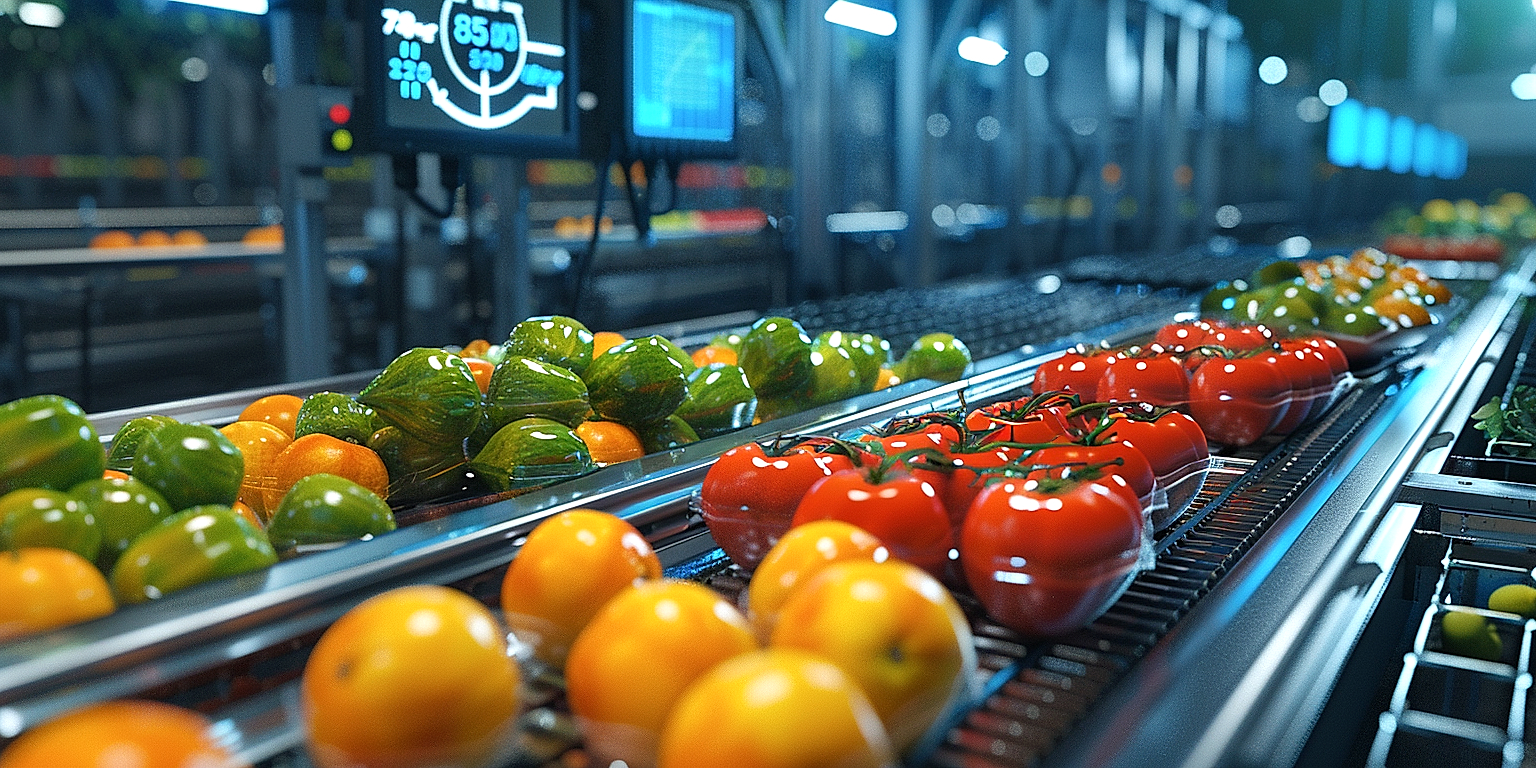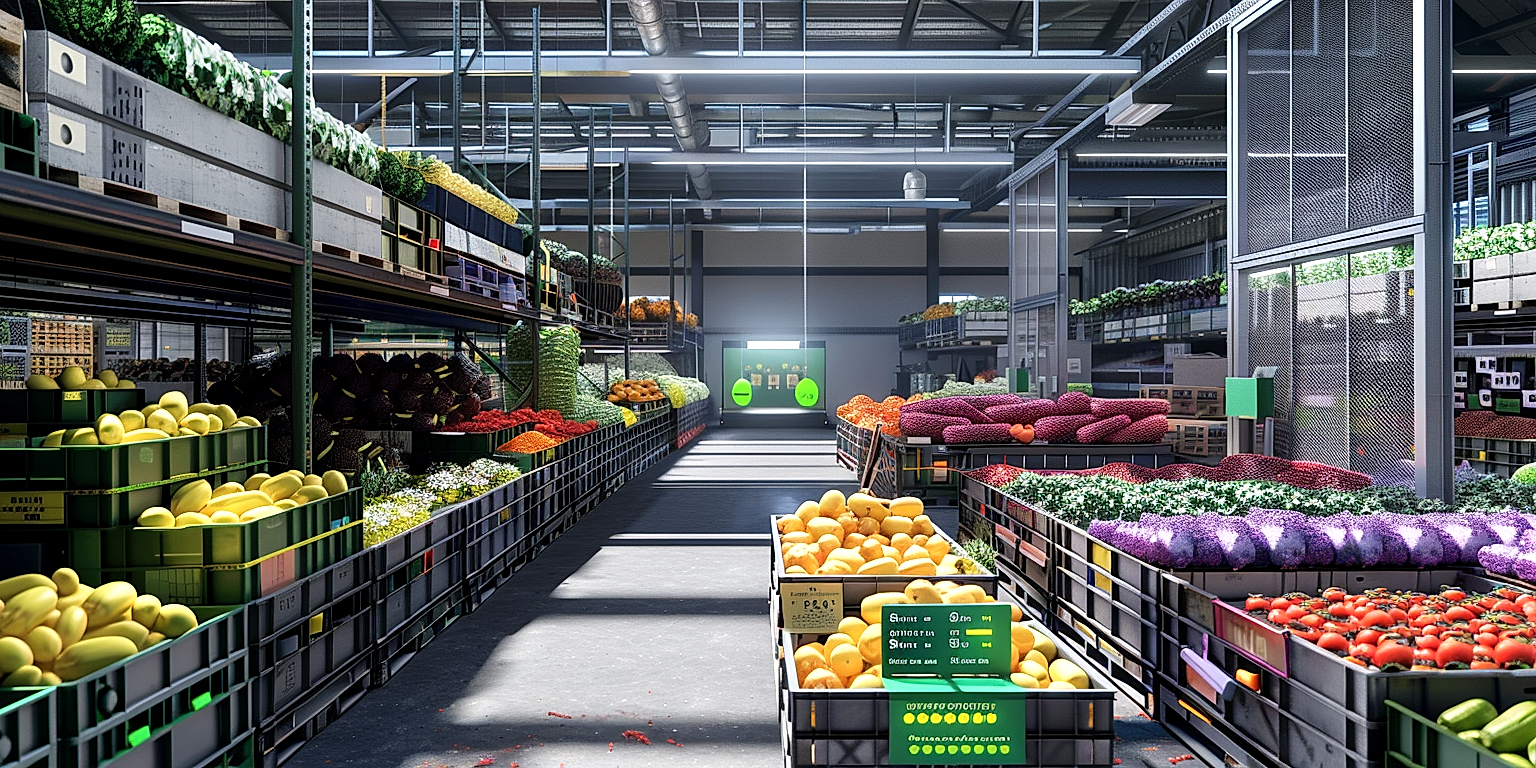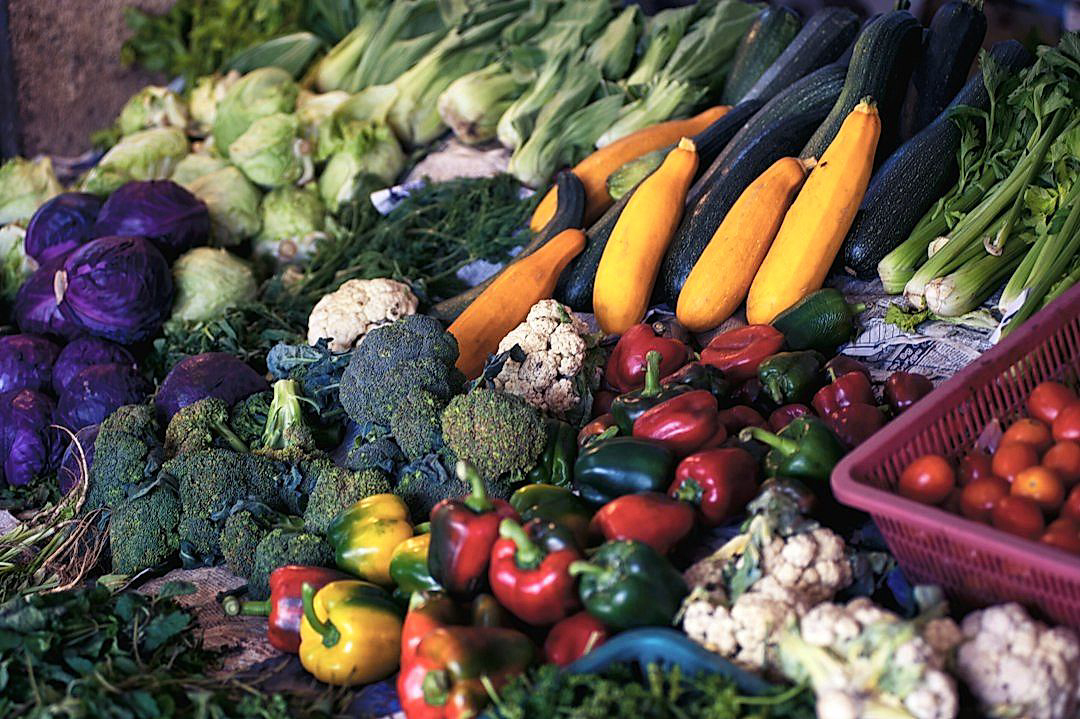The realm of produce processing is a dynamic one, fraught with complexities and intricacies that call for strategic planning and execution.
A critical area that often makes the difference between success and failure is supply chain management.
When executed correctly, it can greatly enhance the efficiency, reliability and cost-effectiveness of operations.
However, despite its importance, many processors continue to grapple with refining their supply chain strategies.
This challenge is exacerbated by constantly evolving industry demands and shifts in consumer preferences.
In this context, achieving optimization in supply chain management becomes crucial for any business that seeks to thrive in the produce processing industry.
Contents
- Supply Chain Optimization Tips For Produce Processors
- 1. Implement a Real-Time Produce Tracking System
- 2. Boost inventory management with advanced software
- 3. Cultivate strong relationships with suppliers.
- 4. Foster Regular Communication with All Stakeholders
- 5. Ensure adequate training for supply chain staff.
- 6. Prioritize Waste Reduction in Processing Practices.
- 7. Regularly review and optimize logistics routes
- The Bottom Line
Supply Chain Optimization Tips For Produce Processors
1. Implement a Real-Time Produce Tracking System
Today’s technological advances allow for real-time tracking of produce, which is of paramount importance in the supply chain optimization for produce processors.
Through the use of tracking systems such as GPS and barcode scanning, the journey of the produce can be traced from the farm to the retail shelves, giving a clear picture of the product flow.
The increased visibility of the product’s journey contributes to several key factors in supply chain optimization, including accuracy, efficiency, and effectiveness.
By implementing real-time tracking, inventory discrepancies can be pinpointed before they become a major issue, contributing to better inventory management.
Moreover, this system helps in reducing waste by providing information on product expiry dates and helping to cycle out produce that is close to expiring, thus ensuring high-quality produce reaches the end consumers.
Another benefit of a real-time produce tracking system lies in its ability to assist with recall procedures.
By accurately pinpointing the source and distribution of a specific batch, it can aid in efficiently managing any potential issues, thereby minimizing both financial and reputational risk.
Real-time tracking systems can also lead to a more effective relationship with suppliers.
Suppliers, growers and transporters alike can utilize this system to monitor the delivery speed and handling of the produce.
This can push suppliers to be more accountable and ensure that best practices are continuously being followed.
Moreover, real-time data can provide insight into how to optimize logistics routes, which in turn can lead to cost savings and improved delivery times.
However, the value of a real-time tracking system hinges on its implementation and the training of staff who are using the system.
It is crucial to not only invest in the system but also in proper training for all relevant employees.
This would include warehouse staff, delivery drivers, purchasing staff, and others who handle or deal with produce
Therefore, a thoughtfully implemented and supported real-time tracking system can be a major asset in achieving supply chain optimization for produce processors.
It works by increasing visibility, accuracy and accountability at each step of the supply chain process, subsequently benefiting all stakeholders.
2. Boost inventory management with advanced software
One of the primary ways to optimize the supply chain in produce processing is to boost inventory management strategy, notably through the use of advanced software.
In recent years, technology has revolutionized various aspects of business, including supply chain and inventory management.
There’s a broad range of advanced inventory management software available, each offering varied and sophisticated functionalities.
These software solutions provide a detailed and real-time view of stock levels, allowing you to track produce from procurement to delivery.
By providing precise information on each product, the software aids in reducing overstocking or understocking issues.
This is particularly vital in the produce industry where goods are perishable and need immediate processing and delivery.
A powerful software system helps manage expiration dates, ensuring that the oldest inventory is used first – a practice known as First In, First Out (FIFO).
This significantly minimizes waste, boosts efficiency, and can improve the produce quality reaching the consumers.
Following, the implementation of advanced inventory management software fosters better resource planning and ordering procedures.
This results in making more accurate forecasts on produce demand and supply, hence enabling better business decisions.
Besides, the software facilitates the automation of various inventory processes, reducing the possibility of human error.
By boosting operational efficiency and reducing losses, the right inventory management software ultimately contributes to the increase in profitability.
In essence, the choice of adopting technology to manage inventory is a strategic one; you would need to consider variables such as cost, ease-of-use, and the specific needs of your organisation.
Training of staff to use the new system is also an important aspect of this transition.
Thus, integrating advanced software into inventory management is a substantial move towards supply chain optimization for produce processors.
3. Cultivate strong relationships with suppliers.
For a seamless supply chain in the produce processing industry, strong, healthy relationships with suppliers are essential.
Without healthy relationships, supply chain operations can be constantly disrupted causing sizable losses.
Quality produce depend largely on suppliers, and if relationships are strained, the quality and quantity of produce supplied could be compromised.
Suppliers are a key part of the supply chain network, ensuring that produce processors have what they need to fulfill orders and meet demand.
As such, an open, ongoing line of communication with suppliers must be maintained at all times.
One of the most effective ways to cultivate strong relationships with suppliers is by treating them as valuable partners, not just vendors or service providers.
This involves clarifying expectations, setting mutual goals, sharing relevant information and providing timely feedback.
Negotiating fair terms of contract that benefit both parties can also significantly improve supplier relationships.
Produce processors should also be transparent and honest about their capacity, goals and limitations.
It’s also good practice to show appreciation for suppliers’ work, either through simple acknowledgements or more formal recognition programs.
In the event of a misunderstanding or error, it’s important to address these matters swiftly and fairly, demonstrating to suppliers your commitment to the relationship.
Investing in relationship-building activities, such as joint planning sessions or corporate events, can also foster stronger bonds.
When a supplier feels valued and their contributions are recognized, they are likely to go the extra mile to ensure your produce processing operations run smoothly.
In short, the relationships you cultivate with your suppliers can, and often does, directly affect the efficiency and success of your supply chain.
Therefore, it is prudent for produce processors to invest time and resources in cultivating and maintaining these incredibly crucial relationships.
4. Foster Regular Communication with All Stakeholders
In the realm of supply chain optimization, establishing and fostering regular communication with all stakeholders –including suppliers, staff, customers, and regulatory authorities– is a vital component.
Regardless of the sector, effective communication is integral to successful operations.
For produce processors specifically, it’s important to relay information about order statuses, product quality, delivery schedules, and more in a timely and accurate manner.
A continuous exchange of information can help mitigate potential issues, enhance relationships, and ultimately bolster the overall efficiency of the supply chain.
Moreover, streamlined communication channels are instrumental in promoting transparency within the supply chain, leading to increased trust from customers and the broader market.
It is crucial that produce processors establish standardized communication protocols and clearly delineate points of contact throughout all levels of the supply chain.
Doing so ensures the right information reaches the right person at the right time, preventing confusion and reducing the likelihood of errors.
If issues concerning orders or quality assurance arise, swift communication with the necessary stakeholders can pave the way for swift problem resolution.
Conversely, neglecting to communicate effectively may leave those involved in the supply chain feeling uninformed or undervalued, which can negatively impact relationships and overall performance.
Additionally, engaging in regular communication showcases a processor’s commitment to customer service and quality, as it demonstrates active management of their supply chain.
Clear, consistent communication also provides opportunities to gather feedback from stakeholders, which can be invaluable for continuous improvement efforts.
By encouraging an open dialogue, produce processors can gain a deeper understanding of supplier capabilities, staff needs, customer expectations, and more, allowing them to better match supply with demand.
Moving forward, punctual and effective communication should be viewed as an essential tool as opposed to an administrative chore within the realm of supply chain optimization for produce processors.
After all, while inventory management software and logistical optimizations can greatly enhance efficiency, they are not substitutes for regular, clear and open communication among all parties involved.
In essence, regular communication forms the backbone of any successful supply chain, making it an imperative point of action for produce processors aiming for heightened operational efficiency.
5. Ensure adequate training for supply chain staff.
Providing adequate training for your supply chain staff is an essential component in the optimization process for produce processors.
The knowledge and competence that is instilled into the employees through training can greatly boost the efficiency and productivity of the overall supply chain.
The trained professionals should be skilled enough to handle unexpected situations or glitches in the supply chain without impacting the produce processing significantly.
A well-equipped supply chain staff is a critical backbone for a robust and optimized supply chain in any produce processing business.
Training should encompass knowledge on all areas of the supply chain from produce sourcing, handling, quality control, inventory management to distribution and delivery.
Hands-on training on advanced software for inventory management, real-time tracking systems, and logistics can ensure accurate and timely operations.
Organizations must also ensure that the supply chain staff are continually updated with the latest advancements, trends, and best practices in the industry.
Ongoing training programs and skill enhancement modules can help maintain a motivated workforce that is well-informed and adaptive to changes.
This adaptability and skills allow them to make informed decisions, identify problem areas early, and devise effective solutions that can save both time and resources.
Regular feedback and performance assessment further ensures that the staff are continuously improving and evolving in their roles.
An adequately trained supply chain staff can lead to improved product quality, minimized waste, reduced costs and delivery times , thus resulting in a much more streamlined and efficient supply chain.
It is, therefore, imperative for organizations involved in produce processing to invest in suitable training and development programs for their supply chain employees.
The return on investment in skilled staff training is almost always high as it leads to improved processes, advanced problem-solving skills, and overall business growth.
In conclusion, ensuring adequate training for supply chain staff is not just necessary, but indeed a prerequisite for successful and sustainable supply chain optimization in produce processing.
Just like a well-oiled machine, a well-trained staff forms the seamless gears that drive the produce supply chain towards optimization and success.
6. Prioritize Waste Reduction in Processing Practices.
Waste reduction in processing practices is a paramount factor to be considered in supply chain optimization for produce processors.
The influence waste has on operational costs, environmental sustainability, and overall productivity cannot be understated.
Inefficiencies in the supply chain, such as unnecessary transportation routes, overproduction, or inventory excess, can culminate in significant waste.
In making waste reduction a priority, you not only cut operational costs, thus improving profit margin, but also contribute positively to environmental sustainability.
Each step of the processing – from harvesting to storage, packaging, and distribution – should be scrutinized to identify areas prone to waste generation.
For instance, correct harvesting techniques and timing can reduce the initial loss of produce, thus mitigating waste from the onset.
Also, adequate storage conditions and inventory management can prevent produce from rotting prematurely, therefore minimizing waste.
When packaging, consider using materials that are recyclable or biodegradable to reduce waste generation and promote sustainability.
Another vital aspect to scrutinize is transportation – optimizing routing and reducing the number of transfers can contribute to waste reduction significantly.
Introducing innovative technologies, such as smart packaging and cold chain management systems, can also play an essential role in reducing waste.
These technologies monitor and maintain optimal conditions throughout the supply chain, hence ensuring the longevity of the produce and minimal loss.
Implementing waste-to-energy programs is another brilliant strategy towards waste reduction.
Instead of going to landfill, waste can be transformed to energy, thus having a two-fold benefit – waste reduction and energy generation.
Composting is also an excellent waste reduction strategy, whereby leftover organic produce is converted into nutrient-rich soil for farming.
Strict adherence to good manufacturing practices (GMP) can go a long way in mitigating waste generation in the processing facility.
Finally, intensifying team training and cultivating a culture of waste reduction is necessary to achieve long-term success in waste reduction.
7. Regularly review and optimize logistics routes
The logistics routes of produce processors play a fundamental role in the supply chain.
With the perishable nature of most produce, effectively mapping out logistics routes can help get products to market quicker while reducing waste.
Delay in transportation or a poorly planned route can lead to significant losses in product freshness and quality.
A critical practice that should be adopted by produce processors is to regularly review these routes to identify any possible bottlenecks or inefficiencies that can be improved upon.
Optimizing these routes can significantly improve service delivery, reduce costs, and enhance overall business performance.
Through logistics route review and optimization, processors can also identify potential risks and disruptions within the supply chain and take proactive measures to mitigate them.
For instance, a regular review might highlight certain routes that are often affected by bad weather or roadworks, thus requiring an alternative plan to ensure continued service delivery.
In the era of digital transformation, processors can leverage advanced mapping and routing technologies that can provide real-time traffic data, optimal routing options, and predictive analysis to aid in decision-making and planning.
This will not only optimize logistics routes but also contribute to achieving greater operational efficiency.
Moreover, reviewing and optimizing logistics routes is not a one-time effort but should be a continuous process to adapt to changing market dynamics, customer expectations, and infrastructure developments.
For instance, a route that is optimal today might not hold the same efficiency in the future due to numerous factors, such as company expansion, climate change, or even changes in fuel prices.
Also, processors should not overlook the importance of instilling a culture of continuous improvement within the organization.
Reviewing logistics routes regularly, and having an open mind to making changes when necessary, serves to reinforce this culture and instigate positive changes in the long term.
As part of the review process, feedback from field personnel such as delivery drivers or dispatchers who interface directly with these logistics routes should be considered as this can provide valuable insights from firsthand experiences.
Ultimately, the aim of reviewing and optimizing logistics routes is to enhance supply chain performance and customer satisfaction, and regular engagement with this practice will undoubtedly yield positive results for produce processors.
The Bottom Line
Successful supply chain management requires a multifaceted approach that focuses on key aspects such as inventory control, stakeholder relations, staff training, and sustainability.
By implementing real-time tracking, applying advanced software for inventory, fostering relationships with suppliers, maintaining regular communication with stakeholders, ensuring staff are well-trained, prioritizing waste reduction and consistently optimizing logistics routes, businesses can dramatically improve their supply chain efficacy.
These strategies work synergistically to not only optimize the supply chain operation but also contribute to an enterprise’s competitive advantage and sustainable development.




